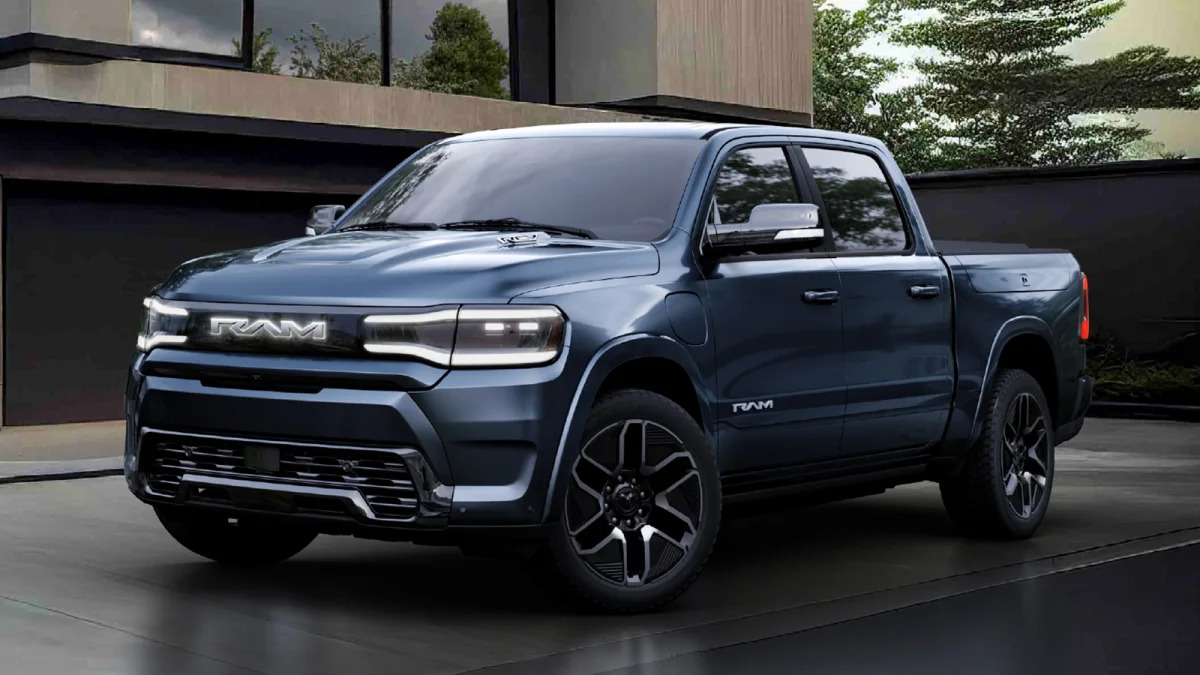The Chicago Auto Show finds itself in a good spot thanks to a couple of things fortuitously moving in its favor. With the Super Bowl later than ever — it now falls on Valentine’s Day weekend — and the Detroit Auto Show retrenching in the fall, the Chicago show enviably stands alone as a winter marketing opportunity for carmakers.
Look at what Ram did. On Thursday, the company announced that its electric pickup will be called the 1500 REV. About 72 hours later, its Super Bowl spot dropped, highlighting the dangers of ‘premature electrification’ and revealing the production truck. After trailing Ford, GM and Tesla in the electric truck race, Ram immediately told its story to millions and took a dig at its rivals.
You can’t draw it up any better than that. Perhaps other automakers will follow suit, using the Chicago show to preview strategy and then the Super Bowl to explain it to the public.
Simply by hanging on, Chicago is in a decent position. There is no major auto show between Los Angeles in late fall and New York in early spring. CES in January comes and goes as an event that automakers care about, and Detroit’s move to September clears the deck for winter reveals, should automakers still want to promote their products early in the year..
Chicago has always bragged about being the “nation’s largest auto show,” a tenuous claim based on the cavernous square footage of the McCormick Place rather than the significance of its reveals. But it's a huge consumer show, and a lot of people attend with an eye on buying their next car. That has allowed it to remain relevant in the Midwest while offering a stage for automakers.
The Super Bowl used to be played in January, and the Detroit Auto Show used to be the Super Bowl of new car reveals. Neither of those things are true anymore. Through luck and circumstance, the Chicago Auto Show suddenly finds itself in a nice spot.
Other news and notes
Small trucks — who’s next?
Speaking of trends we didn’t see coming a few years ago, small trucks are staging a comeback. The Ford Maverick and Hyundai Santa Cruz are going head-to-head in the segment, but they won’t be alone for long. GM, Toyota, Nissan, VW and Mitsubishi are all reportedly looking at making a small truck.
Given the sales success of the Maverick, which has effectively replaced the Ford Focus as the Blue Oval’s B-segment offering, it’s a smart move. Consumers like the body style and image it creates, and Ford and Hyundai both succeeded in creating credible products that don’t feel cheap or compromised, as is often associated with smaller vehicles.
To handicap the field: GM has the most obvious path with an overseas model — ironically called the Montana — that could work under the Chevy and/or GMC brands. Like with Ford, they have built-in-truck cred. Nissan would be looking at swapping out the Titan, its slow-selling full-size truck that never gained traction, for something smaller, according to Automotive News. That’s a risky play, though perhaps the bigger risk is doing nothing and chugging along in sixth place in the U.S. full-size truck market.
Toyota should make a small truck, as it has a built-in audience of people who remember when its trucks were, well, smaller. VW has all of the development resources to do so, too, and multiple platforms from which choose. Mitsubishi is an interesting wildcard, and bringing a small truck to the U.S. would complement the Outlander nicely.
Ford vs. GM in F1
The two American automakers could face off on the Formula 1 grid sometime this decade, though they’re going about it in different ways. Ford is teaming up with Red Bull Racing on powertrain development for the newly renamed Red Bull Ford team starting in 2026. General Motors, meanwhile, is taking a more ambitious approach, working with Andretti Motorsports to try to put an American F1 team in the field, ideally with an American driver.
As we discussed on the Autoblog podcast last week, Ford’s venture is a done deal and carries less risk. GM, which wants to run a team under the Cadillac banner, faces greater hurdles to even get in the field. Ford can claim a part of 10 constructors’ titles and has a much deeper history in the sport, while GM has basically no experience in motorsports’ top series. Theoretically, GM’s play has a higher ceiling for creating buzz in the US, while Ford’s is more promising in the near term (Red Bull has five titles since 2010). On the other hand, if the Cadillac Andretti cars are backmarkers, that’s a tough look for GM. Regardless, it will be fascinating to watch, and Americans motorsports fans have picked the right time to get interested in Formula 1.
Related Video










Sign in to post
Please sign in to leave a comment.
Continue